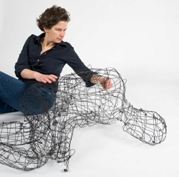
Elizabeth Keithline
Minding Your RFPs And Qs
Posted by Feb 12, 2013

Elizabeth Keithline
When panelists review public art applications, they often view a wide range of artists and artworks. Some artists are quite experienced and others are applying for the first time. If you are new to the field, it is important to understand the difference between a Request For Proposals (RFP) and a Request For Qualifications (RFQ).
RFPs requires that you send a full project proposal. An artist will need to research the commission, (perform a site visit whenever possible), then submit a specific idea, including a full budget and information re: subcontractors, fabricators, and insurance. Unfortunately, artists are not typically paid for the proposed ideas unless they are chosen for the commission. This process is not considered best practice.
RFQs are a pre-qualifying round that requests images, resume, and sometimes a preliminary description of the type of work that you might create. This process operates under the premise that your background work qualifies you for round two finalist selection. Why would a commissioning agency waste your time generating a proposal, when your background experience is not aligned with the proposed project?
Do not request architectural plans during the RFQ stage. That information will come later if you are chosen as a finalist. Selection panelists are primarily looking at images of your background work, as well as CV, website, and any project reviews.
Read More















